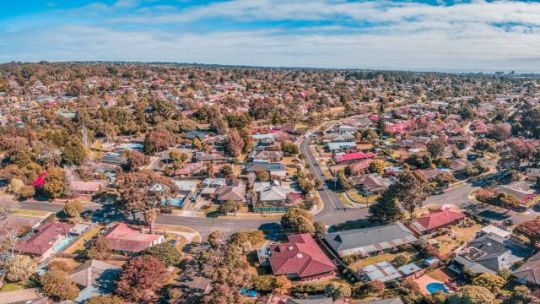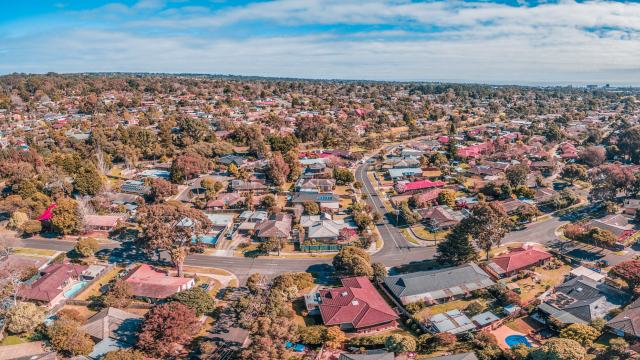Double-dip recession could see another 150,000 homes sucked into mortgage stress

A double-dip recession within the next year could significantly impact Australian homeowners, with some 1.4 million already in financial stress, according to a leading analyst. We reveal the type of homeowners most likely to be impacted and what households can do to protect themselves.

At the moment, around 41% of households are in financial stress with their mortgages, according to mortgage analyst Martin North, of Digital Finance Analytics.
His projections show if Australia goes into a double-dip recession within the next year, mortgage stress levels would go from around 41% of households to around 46%, which would represent another 150,000 households added to the 1.4 million currently in financial stress.
He measures financial stress in terms of when people have too much cash flowing out to cover expenses such as their mortgage or rent, compared to how much money is coming in.
People in financial stress would be much more likely to reach for a credit card, take out a personal loan, or use buy now pay later services such as Afterpay, because many people in this situation think of their financial difficulties as a short-term issue, he said.
“But if there is a double-dip recession, you can’t muddle your way through this,” Mr North told Canstar.
“A lot of households would have already shot their bolt, so they’ve got less in the way of savings to start with, they’ve got less of a buffer to start with, and if, in fact, the economic trajectory is slower than many people think, it could well be a problem.”
What is a double-dip recession?
A double-dip recession typically refers to an economy that experiences a recession and then, relatively shortly after recovery, goes back into another one, according to UNSW Business School Professor of Economics Richard Holden. A regular recession, on the other hand, usually occurs seven or eight years apart, other than Australia’s unusual 30-year record that broke last year under the weight of the pandemic.
Australia escaped the technical definition of a double-dip recession on Wednesday, with national accounts data showing the economy performed better-than expected, having grown by 0.7% in the June quarter.
But many economists warn a double-dip recession is looming, if not already here, and expect the September quarter results to show a huge contraction as the full effects of extended lockdowns are reflected in the official numbers.
“We had a recession – defined as two consecutive quarters of negative GDP growth – in Australia last year as a consequence of COVID-19, and it’s looking like that will probably happen again this year,” Professor Holden told Canstar.
He said the lockdowns in New South Wales and Victoria had reduced economic activity, and in order to avoid or get out of another recession we would need to get the virus under control and reopen the economy.
“In this instance, in the context of the Delta variant, it means getting vaccination rates up as high as possible as quickly as possible,” he said.
The three groups of Australian homeowners likely to be impacted most
A double-dip recession’s impact on households would be widespread, Mr North said. These are the main groups he’s identified where there is “no wiggle room” in their cash flow to withstand falling into financial stress.
1. First home buyers
Mr North said first-time buyers who had ploughed into the market paying top dollar for a home would struggle in another round of recession.
“They’ve basically got leveraged to the hilt, and they’re definitely struggling,” he said.
2. People who bought in highly developed areas
The second group are those who bought three to four years ago at prices above what they could really afford, particularly in suburbs like Western Sydney and Point Cook in Melbourne where there’s been high growth with a lot of new building, subdivisions and selling properties off the plan, Mr North said.
“A lot of the people who were buying were first generation migrants to Australia. They’ve come in perhaps with a reasonably good job, but they’ve bought these new properties at very high prices relative to their income and have very high mortgage commitments,” the analyst explained.
“Quite often both parents are working full time to try and pay the mortgage, but if one of them loses their job or loses hours, they don’t have enough money coming in and then try to get additional part time jobs to try and make it up, leaving no wriggle room in their cash flow.”
3. People moving into retirement
The third group are the people moving into retirement.
“Some people have had to move into retirement before they expected to, and they’ve still got a mortgage,” Mr North said. “They were relying partly on income from investment properties and income from term deposits. But the term deposit rates have dropped again.”
He said there could also be a further fall in rental returns, meaning some property investors who had thought they might start to see a return on their investment property could be disappointed.
What can homeowners do to protect themselves?
The number one thing Mr North recommends households do is to assume things aren’t going to bounce back quickly, and take more ownership of their finances by preparing for a “what if” worst-case scenario, looking at where they could prune their finances to deal with the next six months of expenses. His top five tips are to:
- Understand your cash flow and see what money is coming in and going out.
- Prioritise your spending and consider where you could cut back, such as by reducing streaming subscriptions.
- Check your home loan interest rate to see whether you could save more each month by switching to a lower-cost mortgage (after factoring in any application or switching costs that may apply).
- Talk to your lender if you are in financial hardship.
- Consider borrowing less than you otherwise would if you are actively in the market for a property, taking the “what if” scenario into account.
If you need assistance, you could also consider seeking financial advice or reaching out for financial counselling via the National Debt Helpline (NDH), either online or by phone on 1800 007 007.
This article was reviewed by our Sub Editor Tom Letts and Deputy Editor Sean Callery before it was updated, as part of our fact-checking process.

The comparison rate for all home loans and loans secured against real property are based on secured credit of $150,000 and a term of 25 years.
^WARNING: This comparison rate is true only for the examples given and may not include all fees and charges. Different terms, fees or other loan amounts might result in a different comparison rate.
 Owner occupied
Owner occupied
 30% min deposit
30% min deposit
 Redraw facility
Redraw facility
Try our Home Loans comparison tool to instantly compare Canstar expert rated options.





